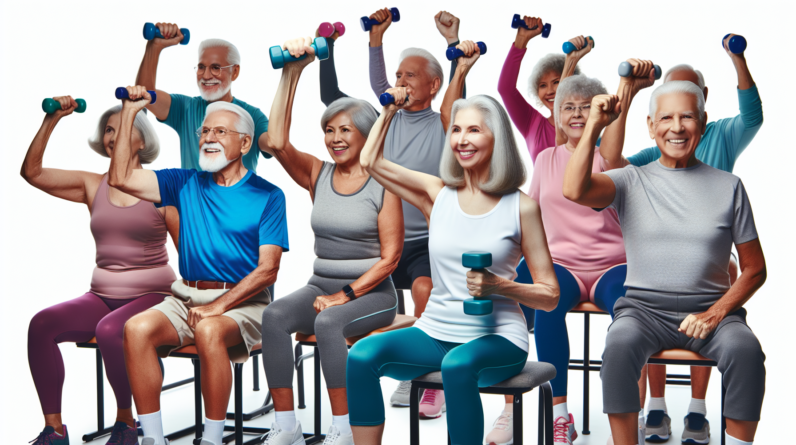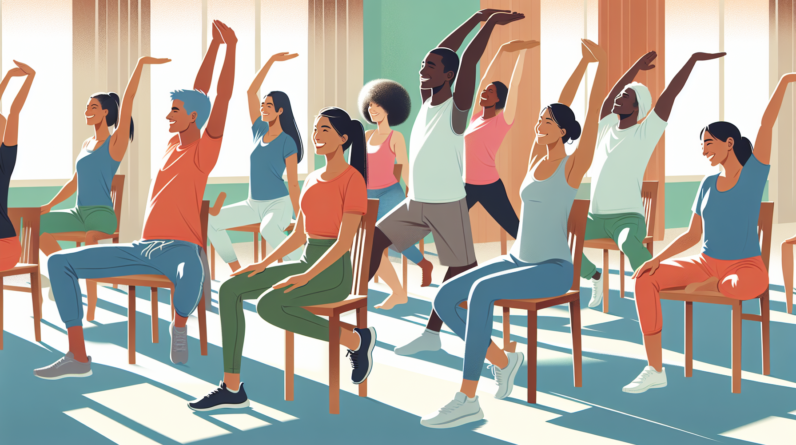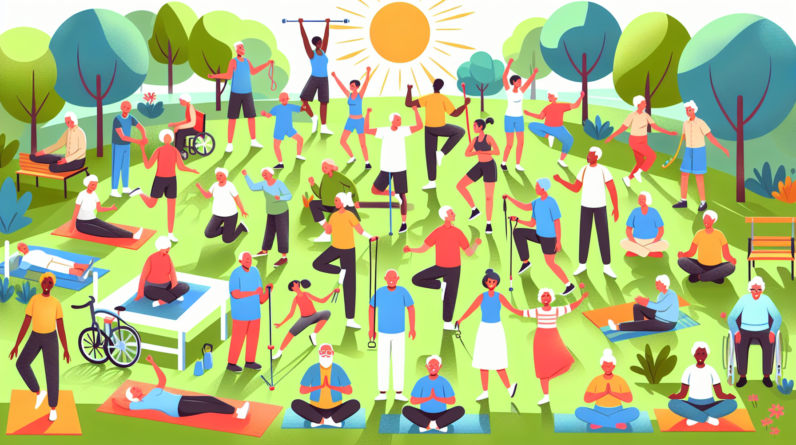Arthritis affects millions of seniors, causing pain, stiffness, and reduced mobility. While it may seem counterintuitive, staying active is crucial for managing arthritis symptoms and improving overall health. However, it’s essential to choose exercises that are gentle on the joints while still providing a good workout. This article will explore a range of arthritis-friendly exercises for seniors, providing a comprehensive guide to staying active and managing arthritis pain.
Understanding Arthritis and the Importance of Exercise
Arthritis is a common condition that causes inflammation in the joints. This inflammation leads to pain, stiffness, and reduced range of motion. There are various types of arthritis, with osteoarthritis (wear-and-tear arthritis) and rheumatoid arthritis (an autoimmune disorder) being the most prevalent.
While arthritis can significantly impact daily life, regular exercise offers numerous benefits for seniors with the condition. Exercise can:
- Reduce joint pain and stiffness
- Strengthen muscles around the joints, providing better support
- Improve flexibility and range of motion
- Boost energy levels
- Enhance mood and mental well-being
- Contribute to weight management, reducing stress on joints
However, it’s crucial to engage in exercises that are appropriate for your fitness level and the severity of your arthritis. Always consult with your doctor or a qualified physical therapist to create a personalized exercise plan tailored to your specific needs and limitations.
Types of Arthritis-Friendly Exercises
Several types of exercises are particularly beneficial for seniors with arthritis. These include:
1. Low-Impact Aerobic Exercise
Low-impact aerobic exercises are gentle on the joints while elevating your heart rate and improving cardiovascular health. Examples include:
- Walking: A fantastic low-impact exercise that you can easily incorporate into your daily routine. Start with shorter walks and gradually increase the distance as your fitness improves. Choose well-cushioned shoes for added support.
- Water Aerobics: The buoyancy of water supports your body weight, minimizing stress on your joints. Water aerobics provides an excellent full-body workout while being gentle on your body.
- Cycling: Whether stationary or outdoors, cycling is a low-impact activity that strengthens leg muscles and improves cardiovascular health. Start with shorter sessions and gradually increase the duration as your stamina improves.
- Elliptical Trainer: Elliptical machines offer a smooth, gliding motion that minimizes joint impact while providing an effective cardiovascular workout.
2. Strength Training
Strength training is essential for maintaining muscle mass and supporting joints affected by arthritis. Aim for two to three sessions per week, targeting major muscle groups. Use light weights or resistance bands and focus on slow, controlled movements. Examples of strength training exercises include:
- Chair Stands: Sit on a sturdy chair with your feet flat on the floor. Slowly stand up, using your leg muscles to lift you, then gently lower yourself back down. Repeat for 10-15 repetitions.
- Wall Push-Ups: Stand facing a wall with your feet shoulder-width apart. Place your hands on the wall at shoulder height. Bend your elbows to lower your chest toward the wall, then push back to the starting position. Repeat for 8-10 repetitions.
- Bicep Curls: Sit comfortably with your feet flat on the floor. Hold a light dumbbell in each hand with your palms facing up. Slowly curl the weights upward towards your shoulders, then lower them back down. Repeat for 10-12 repetitions.
- Calf Raises: Stand with your feet hip-width apart, holding onto a stable surface for balance. Rise up onto the balls of your feet, lifting your heels off the ground. Slowly lower your heels back down. Repeat for 12-15 repetitions.
3. Flexibility Exercises
Maintaining flexibility is crucial for preserving range of motion and reducing joint stiffness. Incorporate gentle stretching exercises into your routine daily. Hold each stretch for 15-30 seconds, breathing deeply throughout. Examples of flexibility exercises include:
- Knee-to-Chest Stretch: Lie on your back with your knees bent and feet flat on the floor. Gently pull one knee towards your chest, holding it with your hands. Hold for 15-30 seconds, then repeat on the other side.
- Cat-Cow Stretch: Start on your hands and knees with your back flat. As you inhale, arch your back like a cat, tucking your chin towards your chest. As you exhale, drop your belly towards the floor, lifting your head and gaze upwards. Repeat the flow for 5-10 repetitions.
- Hamstring Stretch: Sit on the floor with your legs extended in front of you. Gently reach forward towards your toes, keeping your back straight. Hold for 15-30 seconds.
- Shoulder Rolls: Stand tall with your feet shoulder-width apart. Roll your shoulders forward in a circular motion for 10 repetitions, then reverse the direction for another 10 repetitions.
Tips for Exercising Safely with Arthritis
Before starting any new exercise program, consult with your doctor or a physical therapist, especially if you have underlying health conditions. Here are some additional tips for exercising safely with arthritis:
- Start Slowly: Begin with shorter exercise sessions and gradually increase the duration and intensity as your fitness improves. Avoid overexertion, which can lead to increased pain and inflammation.
- Warm Up and Cool Down: Always begin each workout with a gentle warm-up, such as light cardio and stretching. After exercising, cool down with more stretching to improve flexibility and reduce muscle soreness.
- Listen to Your Body: Pay attention to your body’s signals and rest when you need to. It’s normal to experience some discomfort during or after exercise, but sharp pain is a sign to stop and consult with your doctor.
- Use Proper Form: When performing exercises, focus on maintaining correct posture and alignment to avoid unnecessary stress on your joints. If you’re unsure about proper form, seek guidance from a qualified fitness professional.
- Stay Hydrated: Drink plenty of water before, during, and after exercise to stay hydrated, especially during warmer weather.
- Wear Comfortable Clothing and Footwear: Choose breathable clothing and supportive footwear that provides adequate cushioning and stability.
- Modify Exercises as Needed: Don’t hesitate to modify exercises to suit your abilities. You can use chairs or walls for support or reduce the range of motion to minimize stress on your joints.
- Find an Exercise Buddy: Exercising with a friend or family member can provide motivation and make workouts more enjoyable.
- Make Exercise a Habit: Aim for at least 30 minutes of moderate-intensity exercise most days of the week. Consistency is key to reaping the full benefits of exercise for arthritis management.
Managing Arthritis Pain
While exercise is crucial for managing arthritis pain, you can incorporate additional strategies into your daily life to alleviate discomfort:
- Apply Heat or Cold Therapy: Applying heat to stiff joints can help relax muscles and reduce stiffness, while cold therapy can help numb pain and reduce inflammation. Experiment with both to see what works best for you.
- Get Enough Sleep: Adequate sleep is essential for allowing your body to repair and recover. Aim for 7-9 hours of quality sleep each night.
- Maintain a Healthy Weight: Excess weight puts added stress on your joints, so maintaining a healthy weight through a balanced diet and regular exercise is essential for arthritis management.
- Consider Assistive Devices: If necessary, don’t hesitate to use assistive devices such as canes, walkers, or grab bars to improve mobility and reduce strain on your joints.
- Manage Stress: Stress can exacerbate arthritis symptoms, so engage in stress-reducing activities such as yoga, meditation, or spending time in nature.
- Talk to Your Doctor: If your arthritis pain persists or worsens, consult with your doctor to discuss other treatment options, such as medications or physical therapy.
Conclusion
Arthritis doesn’t have to control your life. By engaging in regular, gentle exercise tailored to your abilities, you can manage pain, improve mobility, and enhance your overall well-being. Remember to start slowly, listen to your body, and consult with healthcare professionals to create a safe and effective exercise plan that meets your individual needs. With dedication and the right approach to exercise, you can live a full and active life despite arthritis.





